
Supercharge your lead generation with a FREE Google Ads audit - no strings attached! See how you can generate more and higher quality leads
Get My Free Google Ads AuditFree consultation

No commitment
Supercharge your lead generation with a FREE Google Ads audit - no strings attached! See how you can generate more and higher quality leads
Get My Free Google Ads AuditFree consultation

No commitment
In the competitive world of food packaging, integrating effective advertising strategies is essential for driving brand visibility and increasing sales. Google Ads offers unparalleled access to decision-makers at the precise moment they're searching for solutions. However, one common issue is missing high-value prospects who aren't tracked in the CRM, leading to lost opportunities. By capturing high-intent prospects, Google Ads serves as a critical link in your overall marketing strategy—bridging the gap between awareness efforts and direct sales conversion. This guide will provide you with strategies to optimize your Google Ads campaigns specifically tailored to the food packaging industry, ensuring that your business capitalizes on this powerful tool to achieve measurable ROI.
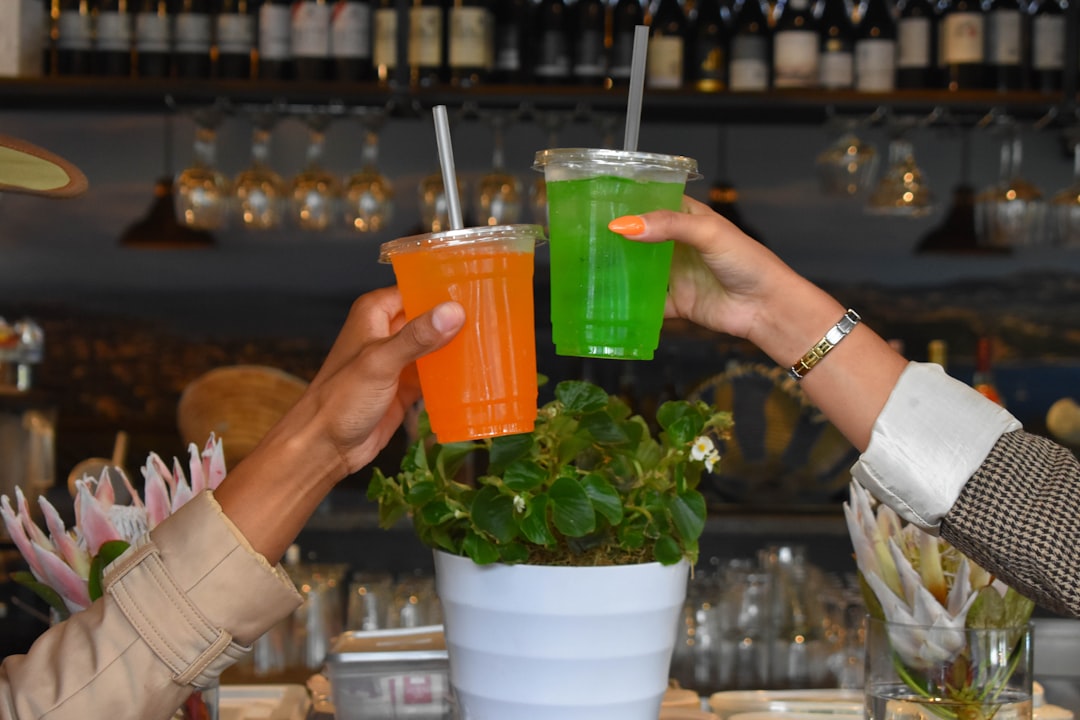
In the food packaging sector, rapid changes in buyer demand and evolving compliance standards require marketing teams to capture and convert high-intent prospects as efficiently as possible. Digital advertising, particularly Google Ads for Food Packaging, allows businesses to proactively target decision-makers who are actively searching for solutions, significantly shortening sales cycles and increasing lead quality.
However, many food packaging firms struggle to distinguish truly engaged accounts from generic website visitors, making it difficult to deliver personalized experiences or time follow-ups for maximum impact. By layering intent signals, CRM insights, and predictive analytics into your Google Ads strategy, you can prioritize the right accounts and align outreach with each prospect’s buying stage, driving better conversion rates and stronger pipeline growth.
Start by curating keyword sets that capture both broad and niche buying signals. Prioritize terms reflecting commercial intent, such as “custom food packaging supplier,” “biodegradable packaging wholesale,” and “food pouch manufacturer.” Incorporate long-tail modifiers like “bulk,” “FDA-approved,” or “sustainable” to reach buyers with specific requirements. Negative keywords, such as “jobs” or “DIY,” should be added to minimize irrelevant traffic and wasted ad spend. When leveraging data-driven platforms, marketers can further refine these lists by identifying which companies are searching for your offerings and adjusting bids to focus on high-value prospects.
Effective Google Ads targeting for food industry buyers requires segmenting audiences by company size, vertical, and buying intent. Use custom audience lists based on website engagement, content downloads, or previous inquiries. Modern platforms can pinpoint anonymous visitors and match them to account-level data, revealing which organizations are moving deeper into the funnel. With dynamic audience updates, your campaigns automatically shift focus to accounts showing increased intent, ensuring spend is allocated where it will drive the best results.
Ad copy and landing page messaging must address the specific needs of food packaging buyers. Highlight differentiators such as speed to market, compliance certifications, and sustainability credentials. For B2B segments, focus on bulk pricing, technical specs, and supply chain reliability. Tailored landing pages with RFQ forms, downloadable compliance documents, and trust badges will boost conversion rates. Using real-time intent data, you can dynamically adjust headlines or featured products based on what each visitor has researched, creating a more personalized and compelling user experience.
Set up a mix of campaign types to match audience behaviors and buying cycles:
For more detail on campaign setup and optimization, see this case study on PPC for food packaging businesses. Throughout the campaign lifecycle, advanced conversion tracking provides full-funnel visibility. By integrating online and offline conversion events—such as trade show meetings or phone inquiries—into your reporting, you gain a comprehensive understanding of ROI. This approach enables you to attribute revenue accurately, optimize budget allocation, and consistently improve Google Ads ROI for food packaging.
Continuous performance optimization is crucial for sustaining food packaging business growth through online advertising. Monitor metrics that matter: cost per lead, click-through rates, conversion rates, and pipeline contribution. Use predictive analytics to identify accounts moving closer to purchase, and automatically increase bids or trigger personalized outreach for these high-value opportunities. Synchronizing enriched audience and lead data between your CRM and Google Ads ensures sales and marketing remain aligned, maximizing every touchpoint’s impact and minimizing wasted spend.
By following this step-by-step framework, food packaging revenue teams can unlock the full potential of digital marketing, outperform competitors, and build a sustainable lead pipeline through targeted, data-driven Google Ads strategies. Ready to take the next step? Get started for free with Sona.
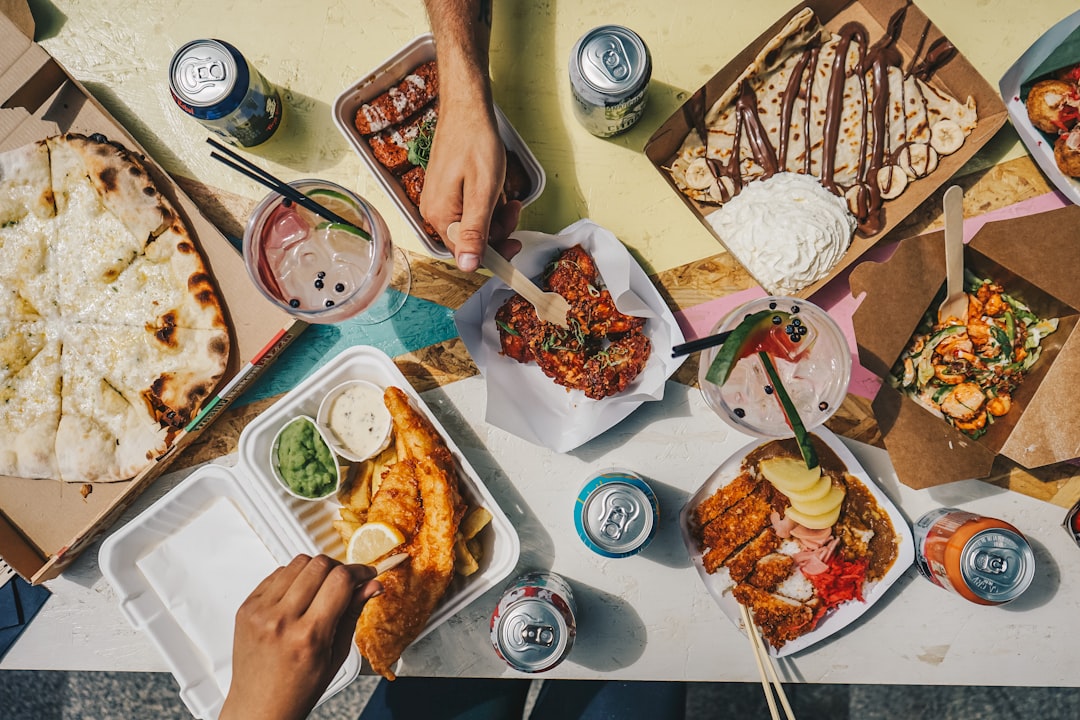
Food packaging businesses face a fragmented buyer journey, where procurement managers and packaging engineers evaluate solutions across multiple touchpoints. Digital marketing for food packaging must capture intent where it originates, connecting real-time buyer signals with high-impact outreach for improved pipeline velocity.
Google Ads addresses this industry complexity by delivering targeted reach to decision-makers as they actively research materials, certifications, and suppliers. Advanced PPC for food packaging tactics allow marketers to create segmentation strategies that identify in-market accounts, customize messaging based on sustainability or compliance needs, and route high-value leads into their sales workflow with precision. For a detailed guide on setting up and optimizing campaigns, see this step-by-step campaign guide.
With Google Ads, food packaging brands can break into emerging and underserved markets, gaining visibility among buyers that traditional channels often miss. This approach supports food packaging business growth by mapping digital interactions to both online and offline conversions, enabling teams to measure true campaign impact and allocate spend to channels driving the best Google Ads ROI for food packaging.
Syncing data between platforms is crucial—enriched audience and lead data can flow seamlessly from Google Ads to CRM and marketing automation systems. Leveraging Sona’s Destinations feature ensures that as buyer intent evolves, audience lists and retargeting pools update dynamically, keeping food packaging marketing campaigns relevant and maximizing conversion opportunities.
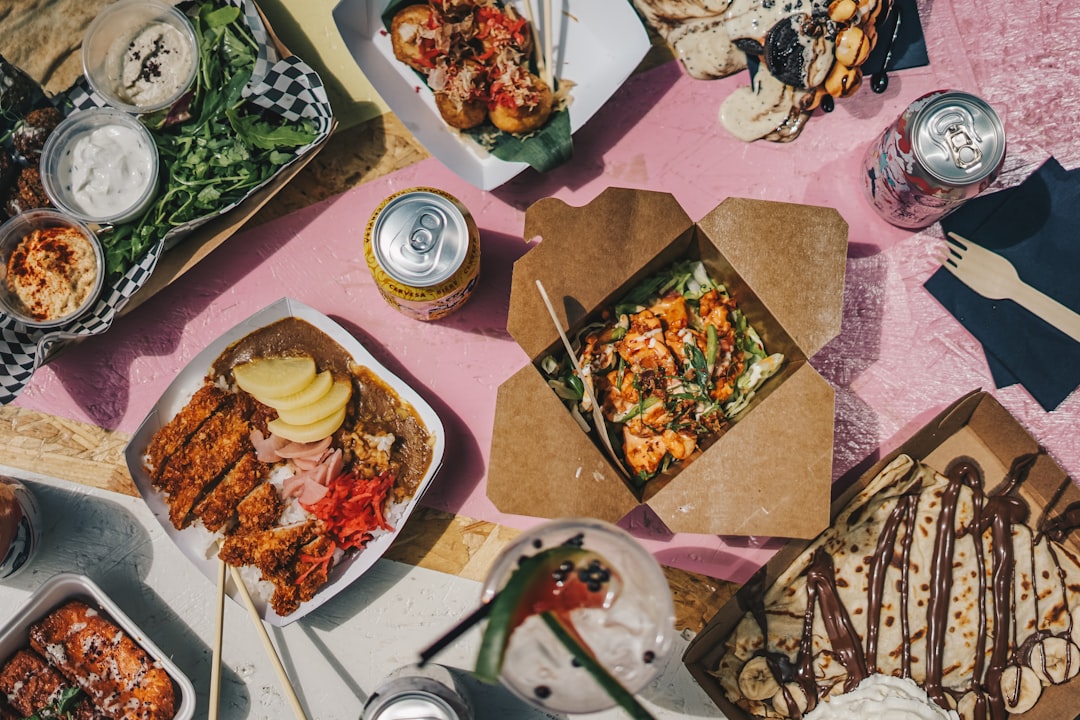
Want to see how unified data can transform your food packaging campaigns? Get started for free with Sona.
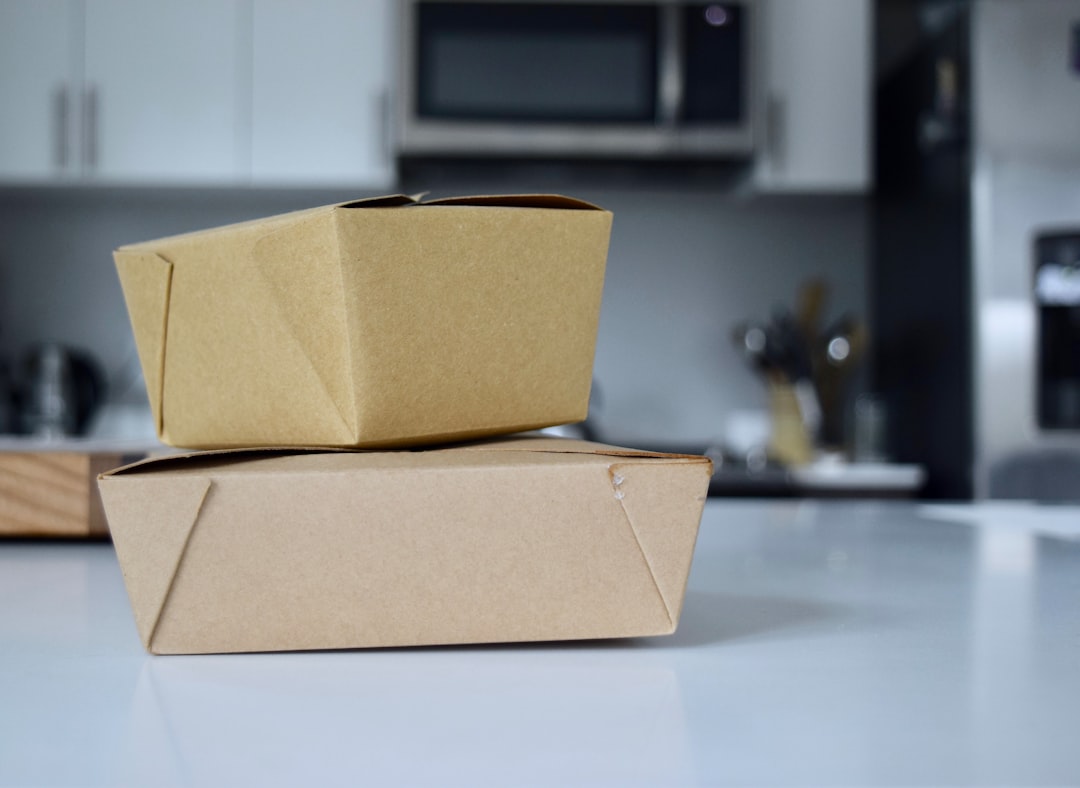
Identifying growth opportunities in the food packaging sector starts with a sharp focus on emerging industry trends. Nanotechnology innovations, such as antimicrobial films and smart packaging, are creating new product categories and opening doors to premium segments. Companies that track these developments can align their Google Ads strategies for food packaging to capture early demand and differentiate their offerings.
Predictive modeling is now essential for revenue teams seeking to engage buyers at the right moment. By analyzing historical engagement and combining it with real-time audience insights, marketers can pinpoint accounts showing genuine intent. This approach minimizes wasted ad spend and allows for highly relevant outreach, improving Google Ads ROI for food packaging.
Evaluating competitor strategies uncovers areas of saturation and exposes underserved segments within the food packaging market. Leveraging niche and long-tail keywords—such as “biodegradable snack pouch supplier” or “retort pouch B2B pricing”—enables advertisers to reach audiences overlooked by less agile competitors. Dynamic audience segmentation further refines this process, updating as prospects engage with content or respond to email nurture campaigns, and ensuring messaging always aligns with the buyer’s current stage.
Cross-channel insights, especially from content and email marketing interactions, inform smarter decisions in PPC for food packaging. By integrating these signals with Google Ads campaign optimization, marketers can identify which topics or product features are driving the most engagement and conversion. Advanced conversion tracking and attribution, including both online form fills and offline sales activities, ensures that every touchpoint contributes to a holistic view of performance—allowing teams to double down on high-return initiatives and quickly pivot away from underperforming tactics. Ready to apply these insights? Get started for free with Sona.
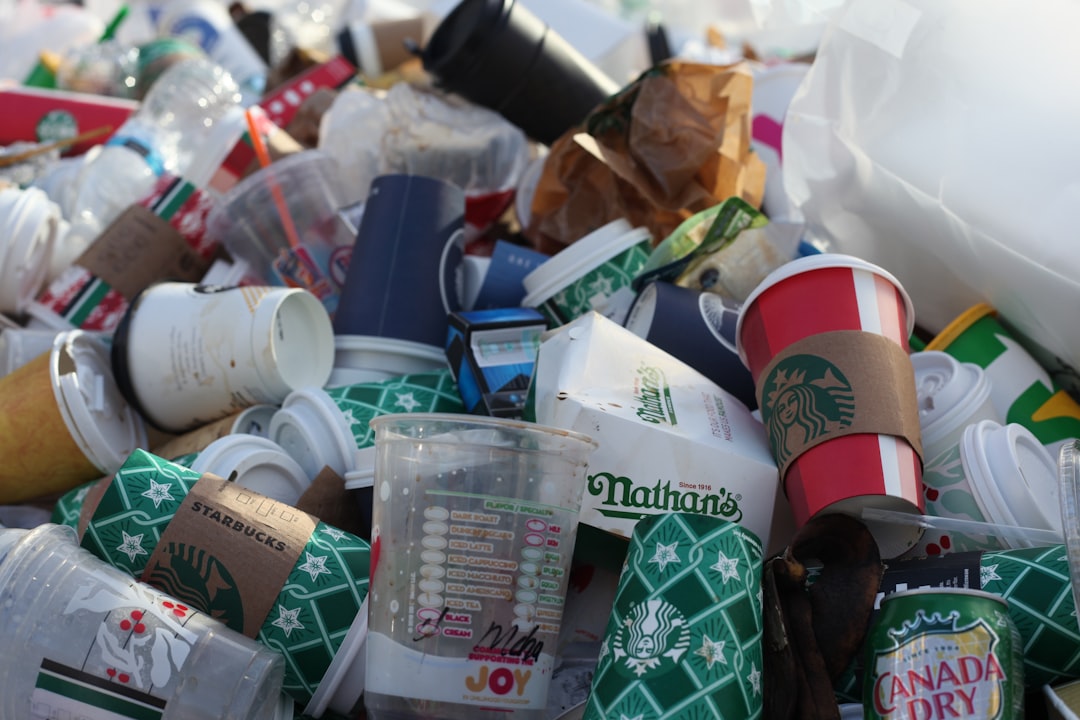
Precision in audience segmentation is crucial for food packaging companies seeking measurable results from digital marketing. Segmenting campaigns by buyer persona—such as large-scale manufacturers requiring bulk food packaging or boutique brands prioritizing sustainable materials—allows marketers to deliver tailored messaging that aligns with each segment’s unique priorities. To explore actionable strategies for food product companies, review this PPC and Google Ads playbook. This approach moves beyond generic advertising, increasing relevancy and engagement while reducing wasted spend on low-fit audiences.
Dynamic segmentation also enables marketers to act on intent signals derived from search behaviors, website visits, and content downloads. By integrating real-time visitor identification, food packaging advertisers can recognize returning prospects, distinguish between procurement managers and product developers, and immediately adapt their ad creative to match in-market interests. This level of granularity ensures that B2B buyers receive messaging about durability, compliance, and volume discounts, while B2C brands see creative focused on customization, design, or sustainable innovation.
Modern platforms streamline this process by syncing enriched audience data and lead profiles directly into Google Ads, CRM, and marketing automation systems. As leads progress through the funnel—downloading technical specs, requesting a quote, or attending industry webinars—audience lists update automatically, ensuring ongoing relevance in retargeting and lookalike campaigns. Advanced conversion tracking further ties online and offline actions (such as trade show booth scans or sales calls) to digital campaigns, providing a full view of ROI and informing budget shifts toward the highest-converting segments. This unified approach to digital marketing for food packaging accelerates lead qualification, shortens sales cycles, and maximizes Google Ads ROI for food packaging growth.
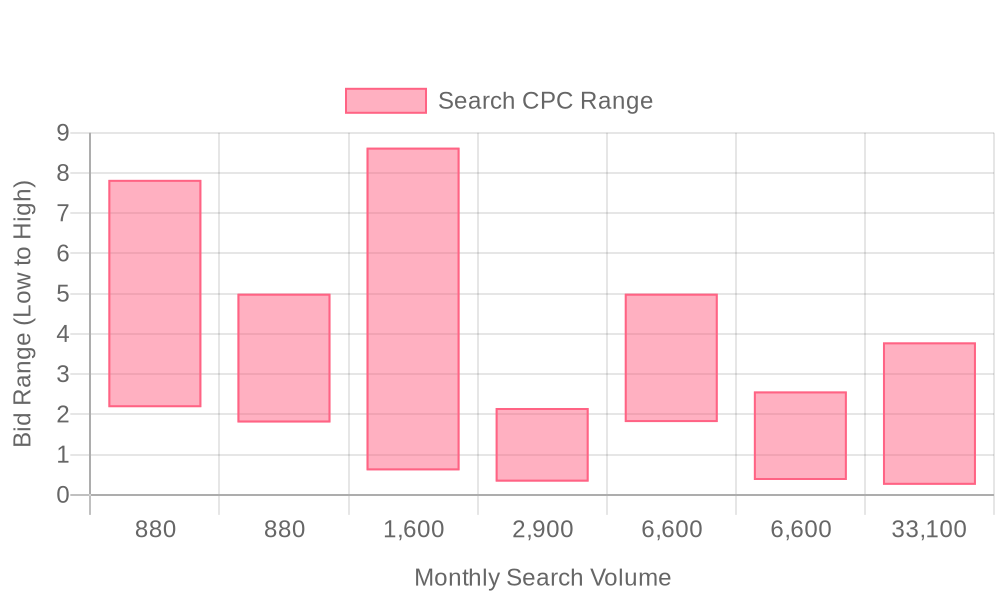
| Industry | Keyword | Monthly Search Volume | Competition Level | Low Bid | High Bid |
| Food Packaging | custom food packaging | 880 | HIGH | 2.18 | 7.83 |
| Food Packaging | food packaging supplies | 880 | HIGH | 1.8 | 5 |
| Food Packaging | stretch wrap roll | 1600 | HIGH | 0.61 | 8.63 |
| Food Packaging | egg cartons for sale | 2900 | HIGH | 0.33 | 2.16 |
| Food Packaging | food packaging | 6600 | MEDIUM | 1.81 | 5 |
| Food Packaging | egg cartons bulk | 6600 | HIGH | 0.37 | 2.57 |
| Food Packaging | pizza boxes | 33100 | HIGH | 0.25 | 3.79 |
Effective keyword strategy is foundational to Google Ads success in the food packaging sector. Food packaging companies can increase qualified lead generation by focusing on high-intent search terms that attract buyers seeking specific solutions, including eco-friendly and custom packaging options. By prioritizing long-tail keywords such as "biodegradable food packaging solutions" and "custom printed food pouches wholesale," marketers reach niche segments with higher conversion likelihood and less competition than broad, generic terms. For more actionable insights, explore this step-by-step PPC and Google Ads strategy.
Incorporating competitive intelligence into keyword selection uncovers new opportunities. For example, identifying rising search volume around "zero waste packaging" and related sustainability-focused queries helps capture demand from environmentally conscious brands and procurement teams. At the same time, implementing negative keywords like "food packaging jobs" or "packaging design courses" filters out irrelevant clicks, ensuring ad spend targets only commercial buyers and not job seekers or students. This refinement step lifts engagement rates and protects budget efficiency—find more strategies in our marketing analytics blog.
Advanced platforms now enable marketers to move beyond traditional keyword research by layering intent signals and visitor identification. With real-time analytics, teams can see which keywords are driving in-market traffic from food manufacturers or CPG brands, then dynamically shift budget to campaigns with the highest conversion probability. As leads engage with ads or request samples, audiences can automatically update, ensuring remarketing lists reflect true buying intent. When CRM and ad platforms are synced, enriched lead data is pushed directly into Google Ads, allowing food packaging marketers to personalize messaging and accelerate deal velocity. This unified approach results in more effective PPC for food packaging, higher Google Ads ROI, and measurable food packaging business growth. Ready to put these strategies to work? Get started for free with Sona.
A results-driven Google Ads campaign for food packaging requires precision at every stage, from intent-driven keyword selection to advanced conversion analytics. Food packaging companies face the dual challenge of reaching both B2B procurement teams and consumer-focused brands, all while differentiating through innovation and compliance. Executing a campaign framework that addresses these complexities ensures improved lead quality and maximizes advertising ROI. For a deeper dive into current and emerging trends impacting food packaging PPC, you can explore the future of food packaging trends to watch in 2025.
Effective keyword lists for food packaging advertising must reflect both industry trends and the nuances of buyer needs. Focus on commercial-intent terms such as “custom food packaging,” “eco-friendly packaging supplier,” and “bulk food containers.” Layer in localization modifiers like “near me” or specific regions to capture high-conversion searches from local manufacturers and food brands. Including long-tail variations around sustainability and compliance, such as “FDA-approved food pouches” or “biodegradable snack packaging,” helps filter out irrelevant clicks and attracts decision-makers with urgent purchasing needs. For more on building demand with targeted terms, review our actionable demand generation playbooks.
Sona’s identification feature improves this process by revealing not just anonymous search intent but also visitor companies and accounts engaging with your food packaging marketing assets. This allows marketers to prioritize keywords and ad groups based on the real-time presence of high-value leads rather than relying solely on aggregated search volumes. As a result, your keyword list is constantly refined for relevance and potential deal size.
Ad copy for Google Ads in food packaging must speak directly to pain points such as supply chain reliability, regulatory compliance, and sustainability. Headlines like “Certified Compostable Packaging for Food Brands” or “Short-Run Custom Printing—Fast Turnaround” quickly attract the right audience. Use descriptions to reinforce claims with quantifiable outcomes—“Reduce spoilage by 20% with high-barrier films”—and always include clear calls to action, such as “Request a Sample” or “Download Technical Specs.”
Dynamic audience insights enable tailored messaging for different buyer segments. As audiences engage with specific product pages or download compliance documentation, Sona updates ad copy in real time to reflect their stage in the buyer journey. This approach ensures B2B procurement teams see value-driven, technical messaging, while consumer brand managers get creative, design-focused offers—leading to higher click-through and conversion rates.
Landing pages for food packaging PPC must do more than capture contact information; they should build trust and accelerate qualification. Incorporate industry-specific CTAs—“Get Custom Quote in 24 Hours,” “Compare Barrier Films Side-by-Side”—and integrate CRM forms for seamless lead capture. Use conversion tools like interactive RFQ calculators or downloadable spec sheets to provide immediate value. For inspiration on effective strategies, see this case study on PPC for food packaging businesses.
Real-time CRM and ad sync ensures that every form submission, phone inquiry, or live chat interaction is tracked and attributed back to the original campaign. Sona’s buyer journeys tool tracks each touchpoint, automatically updating lead statuses, pushing enriched profile data for nurturing, and signaling to ad platforms when an account progresses toward revenue. This level of attribution enables granular measurement of Google Ads ROI for food packaging campaigns and supports more accurate budget allocation.
Continuous campaign optimization is crucial for maximizing the impact of online advertising for food packaging. Use granular performance data from Google Ads—impressions, CTR, conversion rates—combined with Sona’s intent signals to identify which segments or keywords drive the most value. When an account exhibits strong buying intent, the system prompts more aggressive bidding and personalized creative assets for retargeting. For tactical guidance on optimization, visit our blog with marketing analytics insights.
This data-driven approach uncovers high-potential opportunities, such as reallocating budget to keyword clusters that consistently generate RFQs or identifying geographic regions with seasonal spikes in demand. Advanced conversion tracking ensures every touchpoint—whether online form fills or offline trade show inquiries—feeds back into your optimization loop. Ready to adapt your campaigns dynamically and drive measurable growth? Get started for free with Sona.
Food packaging companies ready to scale must prioritize digital visibility where decision-makers actively research solutions. To achieve sustained growth, unify retargeting, regional targeting, and cross-channel promotion into a cohesive digital marketing food packaging strategy. For additional insights, explore our blog on marketing analytics and growth.
Leverage retargeting tactics to recapture interest from procurement managers and product developers who have previously engaged but not yet converted. Using Sona Identification, marketers now pinpoint both anonymous web traffic and identified companies, allowing tailored messaging that reflects each stage of the buying journey. As audiences revisit your site, dynamic segmentation ensures ads and content are always relevant, driving increased engagement and higher conversion rates.
Localizing campaigns in high-opportunity regions further strengthens your footprint. By aligning Google Ads targeting food industry campaigns with supply chain hubs or regions with concentrated food manufacturers, you maximize spend efficiency and reach decision-makers when purchasing cycles are most active. Real-time intent data enables you to prioritize regions where in-market behavior spikes, shifting budgets toward high-converting accounts and capturing demand as it emerges.
Cross-promoting complementary services, such as labeling, logistics, or sustainability consulting, expands your value proposition and opens additional revenue streams. Syncing CRM and ad data ensures your Google Ads for Food Packaging campaigns reflect up-to-date buyer journeys, automatically excluding closed-won deals and nurturing leads not yet ready to buy. When content marketing, PPC, and online advertising for food packaging are unified, your message remains consistent across all digital touchpoints, creating a seamless brand experience and accelerating food packaging business growth.
Continuous measurement and audience optimization are key to maximizing Google Ads ROI food packaging. Advanced conversion tracking allows you to attribute both online and offline actions, such as trade show meetings or inbound RFQs, ensuring true ROI visibility and smarter reallocation of spend. With unified data and agile campaign management, food packaging marketing teams can confidently scale their presence, optimize Google Ads campaign performance, and drive sustainable demand in a competitive market. Ready to take your growth to the next level? Get started for free with Sona.
In conclusion, leveraging Google Ads for the food packaging industry offers a compelling way to enhance visibility and drive sales. By understanding the nuances of targeted advertising, you can craft campaigns that resonate with your audience and effectively showcase your products.
Throughout this article, we've explored the challenges faced by the food packaging sector, such as standing out in a competitive market and reaching the right audience. We've also discussed strategies like keyword optimization, creative ad placement, and data-driven adjustments to optimize your advertising efforts.
The potential to transform your advertising approach is within reach. By applying these insights, you're equipped to elevate your brand's presence and achieve measurable results. The journey to impactful advertising begins with embracing these practical solutions.
To truly harness the power of a unified platform and drive actionable insights, start for free today and experience the capabilities that can redefine your marketing strategy.
Best practices include curating targeted keyword lists, segmenting audiences by buying intent, aligning ad creatives with landing pages, and using real-time intent data to personalize and optimize campaigns.
Effectively target your audience by segmenting them based on company size, vertical, and buying intent, and using custom audience lists from website engagement and content downloads.
Allocate your budget by focusing on high-value prospects and refining your keyword lists to include terms with commercial intent, while also using predictive analytics to optimize spend based on account buying stages.
Focus on keywords that reflect commercial intent like 'custom food packaging supplier' and 'biodegradable packaging wholesale,' and use long-tail modifiers to target buyers with specific requirements.
Measure success by monitoring metrics such as cost per lead, click-through rates, conversion rates, and pipeline contribution, and using advanced conversion tracking for full-funnel visibility.
Join results-focused teams combining Sona Platform automation with advanced Google Ads strategies to scale lead generation

Connect your existing CRM

Free Account Enrichment

No setup fees
No commitment required

Free consultation

Get a custom Google Ads roadmap for your business
Join results-focused teams using Sona Platform automation to activate unified sales and marketing data, maximize ROI on marketing investments, and drive measurable growth

Connect your existing CRM

Free Account Enrichment

No setup fees
No commitment required

Free consultation

Get a custom Google Ads roadmap for your business
Over 500+ auto detailing businesses trust our platform to grow their revenue
Join results-focused teams using Sona Platform automation to activate unified sales and marketing data, maximize ROI on marketing investments, and drive measurable growth

Connect your existing CRM

Free Account Enrichment

No setup fees
No commitment required

Free consultation

Get a custom Google Ads roadmap for your business
Over 500+ auto detailing businesses trust our platform to grow their revenue
Join results-focused teams using Sona Platform automation to activate unified sales and marketing data, maximize ROI on marketing investments, and drive measurable growth

Connect your existing CRM

Free Account Enrichment

No setup fees
No commitment required

Free consultation

Get a custom Google Ads roadmap for your business
Over 500+ auto detailing businesses trust our platform to grow their revenue
Join results-focused teams using Sona Platform automation to activate unified sales and marketing data, maximize ROI on marketing investments, and drive measurable growth

Connect your existing CRM

Free Account Enrichment

No setup fees
No commitment required

Free consultation

Get a custom Google Ads roadmap for your business
Over 500+ auto detailing businesses trust our platform to grow their revenue
Our team of experts can implement your Google Ads campaigns, then show you how Sona helps you manage exceptional campaign performance and sales.
Schedule your FREE 15-minute strategy sessionOur team of experts can help improve your demand generation strategy, and can show you how advanced attribution and data activation can help you realize more opportunities and improve sales performance.
Schedule your FREE 30-minute strategy sessionOur team of experts can help improve your demand generation strategy, and can show you how advanced attribution and data activation can help you realize more opportunities and improve sales performance.
Schedule your FREE 30-minute strategy sessionOur team of experts can help improve your demand generation strategy, and can show you how advanced attribution and data activation can help you realize more opportunities and improve sales performance.
Schedule your FREE 30-minute strategy sessionOur team of experts can help improve your demand generation strategy, and can show you how advanced attribution and data activation can help you realize more opportunities and improve sales performance.
Schedule your FREE 30-minute strategy session





Launch campaigns that generate qualified leads in 30 days or less.
